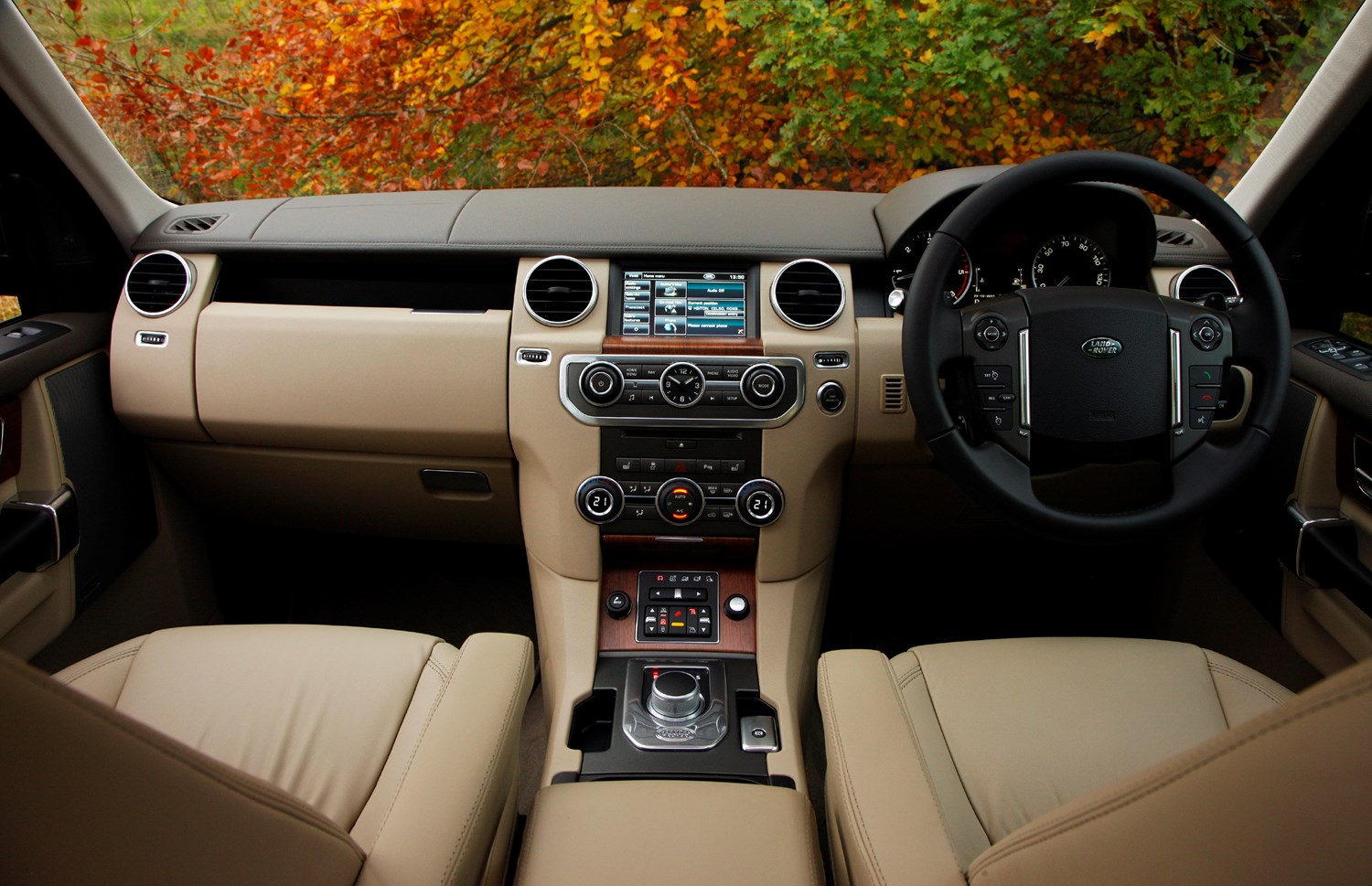Latest model
When the Discovery needed facelifting in 2004 it was rebranded too - becoming the Discovery 4 - though it was really just a mid-life facelift.
Key changes included new LED lighting at the front and rear as well as new tech – including a TFT display in the middle of the dials, a five-camera surround system for parking and Bluetooth and USB connections. While the technology has somewhat dated by modern standards, it’s still a welcome addition.
A revised version of the brand’s acclaimed Terrain Response system was also fitted, along with a new 3.0-litre V6 diesel engine, bringing more in the way of power and efficiency than the engine it replaces.
The Discovery 4 continued in production until 2016 until it was replaced by the fifth-generation model.
Value for money
By modern standards, the £31,995 starting price when the Discovery 4 was new in 2009 meant it offered great value, and today the model is a good used buy, though you need to keep a watchful eye on running costs before considering it a bargain.
Today on the used market, examples start from as little as £7,500, though these will be high-mileage and lower-spec examples. You’ll need to spend around £11,000 to get a version with less than 100,000 miles on the clock. It’s worth noting that GS trim isn’t especially well-equipped – missing out on features like leather upholstery and cruise control, which we think are a must on a car of this size. Instead, it’s worth looking for an XS model or a HSE.
Newer examples are still quite pricey, though, as a later 2016 car with lower mileage can easily still cost more than £30,000.
Looks and image
Despite the later fifth-generation Discovery arriving in 2017, many still regard this fourth model as being the better-looking of the pair. Whether you agree with that is down to your personal opinion, but we reckon this Land Rover is ageing well, even on earlier 2015 cars. Its boxy yet cool shape makes it easy to recognise, while LED lighting was a modern step forward. High-spec models are the most stylish – particularly special-edition Landmark versions that come with a black grille and larger alloy wheels.
As with many cars of this age, the interior hasn’t aged quite so well, particularly the main touchscreen, which feels small and fiddly to use by modern standards, though high-spec versions still feature satellite navigation and a reversing camera. All models also benefit from Bluetooth, too. The quality cannot be faulted, though, as the Discovery has a premium and sturdy feel to it.
Behind the wheel, it’s the Discovery’s impressive cruising ability that shines through. For carrying people and luggage over long distances, this SUV is really hard to fault. It’s very comfortable, while smooth and powerful diesel engines are a good match. Another reason to choose the Discovery over its rivals is its off-roading ability. Thanks to Land Rover’s Terrain Response system (fitted as standard), you’re highly unlikely to ever get stuck, and it’s ideal if you live off the beaten track. The disadvantage is that the Discovery is big and heavy, and it drives that way – lacking the dynamic edge of some of its rivals.





